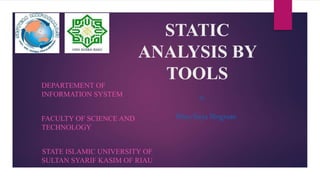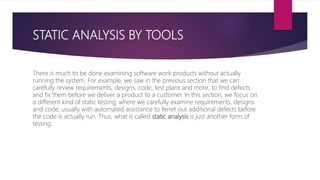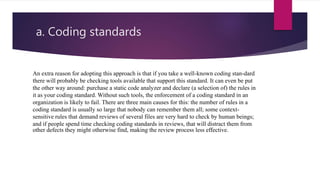The document discusses static analysis tools which can examine software work products like requirements, design, code, and test plans without executing the system. This helps find defects before delivering the product to customers. Coding standards and code metrics are analyzed which help identify complex areas of code that require more testing. Control flow, data flow, and data structure are different aspects of code structure that static analysis considers to understand program effort and find defects.









